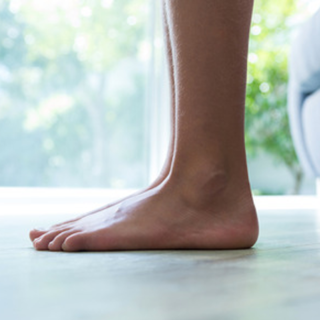 Flat feet (also referred to as flatfoot or pes planus) is often a complex disorder, with diverse symptoms and varying degrees of deformity and disability. However, one characteristic remains consistent in the several types of flatfoot and that is the partial or total collapse (loss) of the foot’s arch.
Flat feet (also referred to as flatfoot or pes planus) is often a complex disorder, with diverse symptoms and varying degrees of deformity and disability. However, one characteristic remains consistent in the several types of flatfoot and that is the partial or total collapse (loss) of the foot’s arch.
Other characteristics shared by most types of flat foot include:
- “Toe drift”–the toes and front part of the foot point outward.
- The heel tilts toward the outside and the ankle appears to turn in.
- A short Achilles tendon, which causes the heel to lift off the ground earlier when walking and may act as a deforming force.
Some people with flat feet may also develop bunions and hammertoes. Health problems such as rheumatoid arthritis or diabetes sometimes increase the risk of developing flat foot. Additionally, obesity may also be a factor in adults who suffer from flatfoot.
Flexible Flatfoot
Flexible flatfoot is one of the most common types of pes planus. It typically begins in childhood or adolescence and continues into adulthood. Usually occurring in both feet and generally progressing in severity throughout the adult years as the deformity worsens, the soft tissues (tendons and ligaments) of the arch may stretch or tear and can become inflamed.
The term “flexible” means that while the foot is flat when standing (weight-bearing), the arch returns when not standing. In the early stages of flexible flatfoot, arthritis does not restrict the motion of the arch and foot, but in the later stages, arthritis may develop to such a point that the arch and foot become stiff.
Symptoms which may occur in some persons with flexible flatfoot include:
- Pain in the heel, arch, ankle, or along the outside of the foot.
- A “turned-in” ankle.
- Pain associated with a shin splint.
- General weakness or fatigue in the foot or leg.
Diagnosis of Flexible Flatfoot
In diagnosing flatfoot, a doctor examines the foot and observes how it looks when the patient stands and sits. X-rays are usually taken to determine the severity of the disorder. It is possible that your doctor will recommend nonsurgical treatments. However, if nonsurgical treatments do not adequately relieve a patient’s pain, may be the necessary next step.
